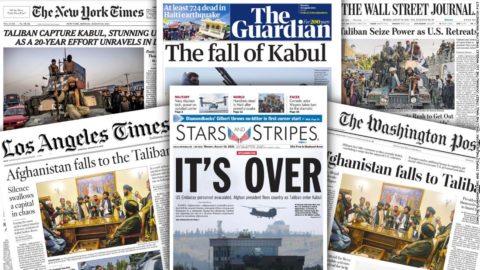“Most leaders would agree that they’d be better off having an average strategy with superb execution than a superb strategy with poor execution.” – Stephen Covey
As we’ve witnessed the devastating images from the fall of Kabul over the past week, leaders should be reminded of an important lesson embedded in the fiasco: in the end it’s all about execution. In a refreshing, though undoubtedly fleeting moment of agreement, media outlets and political leaders on both sides of the aisle have sent a consistent message: although the policy of withdrawing troops from Afghanistan was a widely supported strategy, the execution has been a catastrophic failure. So, what can we learn from this?
First, research shows that most strategies fail due to poor execution. Have you ever gone through a comprehensive strategic planning process, outlined your purpose, mission and core values, and identified visionary goals and objectives, only to place a beautifully organized three-ring binder on a shelf never to be opened again? If the answer is yes, you’re not alone. According to Harvard Business Review, 67% of well formulated strategies fail due to poor execution. In addition, recent research reveals around $1 million dollars is wasted every 20 seconds collectively by organizations around the world due to ineffective execution of business strategy. That’s roughly $2 trillion dollars wasted every single year. A lack of execution is probably costing your business more than you can imagine.
So how do you avoid the failure to execute trap?
- Create a Culture that Promotes Honest Feedback: Too many leaders surround themselves with “yes” people who are either afraid to be honest or lack the guts to do so. This is a recipe for business disaster. Create a culture that empowers teams to candidly discuss issues, even when their insights contradict you as the leader. Have you built a culture where honest feedback is encouraged and rewarded?
- Tee It Up: Teams built on trust have reached a point that allows them to execute business strategy more successfully. Patrick Lencioni, in his book The Advantage, describes this “ideal conflict point” as one that lies between extremes of “artificial harmony” and “mean-spirited personal attacks.” Leadership teams must make intentional efforts to improve conflict resolution skills to prevent disastrous strategic decisions. Do you encourage healthy conflict or simply avoid addressing difficult issues?
- Communicate, Communicate, Communicate: Communication breakdowns almost always are primary contributors to failed execution. As organizational structure become more complex, effective communication becomes exponentially complicated. Leaders should develop consistent processes for pushing out important information to ensure clarity, input and buy-in. Is your communication intentional or do you simply assume people understand?
- Set SMART Goals: Leaders are notorious for setting goals that are broad, vague and immeasurable. Management guru Peter Drucker addressed this by using SMART Goals, which can help you effectively execute strategy. To make sure your goals are clear and reachable, each one should be: Specific, Measurable, Achievable, Relevant, Time bound. Are your goals SMART or vaguely worded suggestions?
- Embrace Accountability: There’s a management axion that states “When everyone is responsible no one is responsible.” This results in what researchers call “Diffusion of Accountability” and is a foundational cause for execution failures. Make sure tasks are assigned to one person, and then hold that person accountable for results. Do you hold team members accountable for assigned tasks?
- Own It: Too often leaders give lip service to owning a decision, while simultaneously deflecting blame to others. Jocko Willink, co-author of Extreme Ownership, addressed this when discussing a failed military mission that he led: “I had to take complete ownership of what went wrong. That is what a leader does — even if it means getting fired. If anyone was to be blamed and fired for what happened, let it be me.” Do you own execution failures or shift the blame to others?
- Avoid Strategic Tunnel Vision: No matter of how good the plan is on paper, blindly pursuing strategy will lead to failure . The best strategies reflect the hard realities facing an organization. Strategic plans are roadmaps, not holy scripture, that guide an organization’s business and operational plans. Effective leaders can execute while simultaneously scanning the horizon for changes that could shift the strategy (i.e., Covid-19, interruption of supply lines, personnel changes). Do you intentionally look for potential disruptions to the strategy and make relevant adjustment?
Execution, whether in the board room or on the battlefield, requires an intentional focus on all these areas. When we fail to address these concerns, we fail our teams, leave our customers exposed, and set our businesses up for disaster. Remember, no matter how great the plan, it all comes down to execution.
The Blue Hen team has decades of experience helping organizations successfully execute strategies and succeed. Reach out to us today to learn how we can help you win. Behind every champion there’s a Blue Hen!




